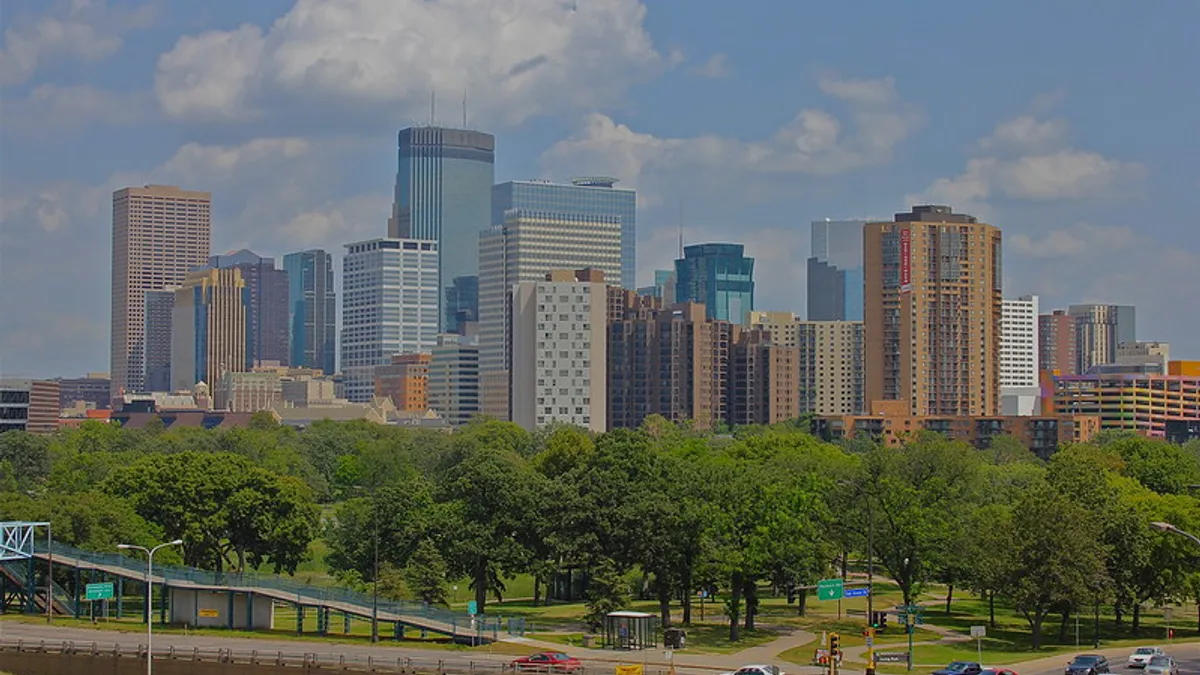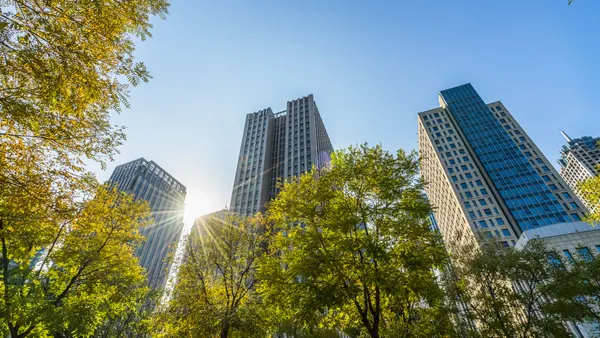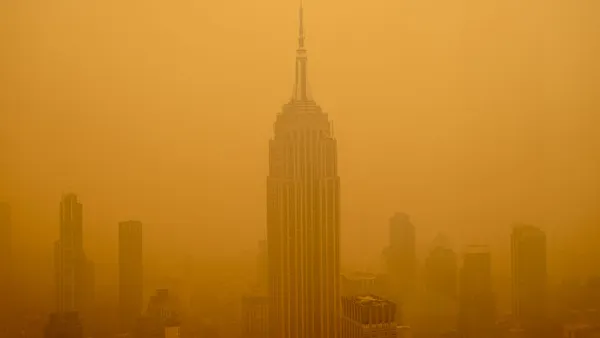Dive Brief:
- Minneapolis has regained the top spot on the annual Trust for Public Land (TPL) ParkScore index of city park systems, but the organization warned of tough budget decisions ahead following the new coronavirus (COVID-19) pandemic.
- Minneapolis held the top spot on the ranking four of the last five years, but fell to second in 2019 behind Washington, DC. TPL said Minneapolis pulled ahead again this year "largely because of new park acquisitions and strategic expansions." The full 2020 ranking is as follows:
| City | ParkScore |
|---|---|
| Minneapolis | 85.3 |
| Washington, DC | 83.3 |
| St. Paul, MN | 82.5 |
| Arlington, VA | 81.5 |
| Cincinnati | 80.6 |
| Portland, OR | 79.8 |
| Irvine, CA | 79.6 |
| San Francisco | 78.9 |
| Boston | 76.5 |
| Chicago | 76.0 |
- TPL found 72% of city residents nationwide now live within a 10-minute walk of a park (up from 69% last year), yet the group said the future of parks may be at-risk amid fiscal headwinds brought by the coronavirus. While it may be tempting for cities to cut park budgets in a bid to balance their books, the positive role parks have played to give residents a safe space outside during the pandemic should influence leaders' thinking, TPL said.
Dive Insight:
As cities enforce stay-at-home orders, parks have taken on an increased importance as a place for people to exercise and stay socially-distanced. TPL Program Manager Ali Hiple said some park trails are being changed to one-way traffic, while others have been closed to vehicular traffic, all similar to some cities' moves to close roads for full pedestrian use.
"We've seen some creative approaches to ensuring people are using the parks safely, and also making sure that everybody who wants to, is able to get out there and enjoy them," Hiple told Smart Cities Dive.
But there are tough financial times ahead. The U.S. Conference of Mayors (USCM) and the National League of Cities (NLC) warned that a vast majority of local officials expect the coronavirus will lead to "painful reductions in revenue this year," and Hiple said parks are often one of the first budget items to see cuts. That could come on the operations side (i.e. grass being mowed less frequently), or on the capital side as building projects get pushed back or shelved altogether.
There are parallels to the aftermath of the 2008 financial crisis, when parks were one of the first items on the budgetary chopping block and saw significant cuts in cities across the country. Hiple said it took a long time for them to recover, but this pandemic should highlight how useful they are.
"They go a long way towards not just being important in times of crisis, but also supporting health and activity and social gathering and things like that in the best of times," Hiple said. "They're really key for a healthy city all around."
Hiple noted the progress that had been made toward the TPL's equity goal of ensuring everyone is within a 10-minute walk of parkland, though she said there is a long way to go. San Francisco and Boston are the only two cities to have 100% of their residents within a 10-minute walk of a park, but Hiple said Minneapolis' focus on equity and underserved neighborhoods in its capital budgeting plan for its parks system has promise. She said it is one thing to have a park close by, but it is also important to make sure it serves people’s needs.
"The question is, a 10-minute walk to a park is great, but a 10-minute walk to what? What's in that park, is it a good park, is it meeting the needs of the people who live around there," Hiple said. "That's where we encourage cities to really focus on localized planning, community engagement, making sure that the planning work that's happening is meeting the needs of the people who live near those parks."
To keep up with all of our coverage on how the new coronavirus is impacting U.S. cities, visit our daily tracker.












